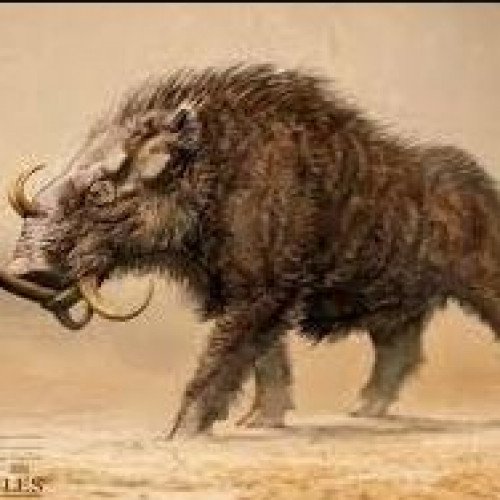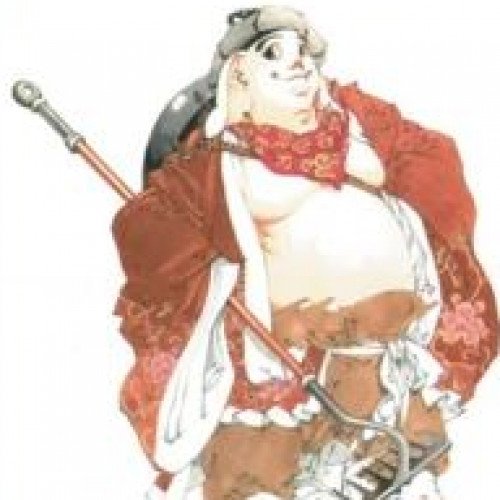Vote on Mythical creatures: Erymanthian Boar vs Zhu Bajie

Erymanthian Boar
In Greek mythology, the Erymanthian boar (Greek: ὁ Ἐρυμάνθιος κάπρος; Latin: aper Erymanthius) was a mythical creature that took the form of a "shaggy" "tameless" "boar" "of vast weight" "and foaming jaws". It was a Tegeaean, Maenalusian or Erymanthian boar that lived in the "glens of Lampeia" beside the "vast marsh of Erymanthus". It would sally from the "thick-wooded", "cypress-bearing" "heights of Erymanthus" to "harry the groves of Arcady" and "abuse the land of Psophis".The fourth labour of Heracles was to bring the Erymanthian boar alive to Eurystheus in Mycenae. To capture the boar, Heracles first "chased the boar with shouts" and thereby routed it from a "certain thicket" and then "drove the exhausted animal into deep snow." He then "trapped it", bound it in chains, and lifted it, still "breathing from the dust", and returning with the boar on "his left shoulder", "staining his back with blood from the stricken wound", he cast it down in the "entrance to the assembly of the Mycenaeans", thus completing his fourth labour. "When the king [Eurystheus] saw him carrying the boar on his shoulders, he was terrified and hid himself in a bronze vessel.""The inhabitants of Cumae, in the land of the Opici, profess that the boar's tusks which are preserved in the sanctuary of Apollo at Cumae are the tusks of the Erymanthian boar, but the assertion is without a shred of probability." In the primitive highlands of Arcadia, where old practices lingered, the Erymanthian boar was a giant fear-inspiring creature of the wilds that lived on Mount Erymanthos, a mountain that was apparently once sacred to the Mistress of the Animals, for in classical times it remained the haunt of Artemis (Homer, Odyssey, VI.105). A boar was a dangerous animal: "When the goddess turned a wrathful countenance upon a country, as in the story of Meleager, she would send a raging boar, which laid waste the farmers' fields."
Statistics for this Xoptio

Zhu Bajie
Zhu Bajie (Chinese: 猪八戒; pinyin: Zhū Bājiè), also named Zhu Wuneng, is one of the three helpers of Tang Sanzang and a major character of the 16th century novel Journey to the West. Zhu means "swine" and Bajie means "eight precepts". Buddhist scholars consider that both expressions are related to "Śīla pāramitā". In many English versions of the story, Zhu Bajie is called "Pigsy" or "Pig". Zhu Bajie is a complex and developed character in the novel. He looks like a terrible monster, part human and part pig, who often gets himself and his companions into trouble through his laziness, gluttony, and propensity for lusting after pretty women. He is jealous of Sun Wukong and always tries to bring him down.His Buddhist name "Zhu Wuneng", given by Bodhisattva Guanyin, means "pig (reincarnated) who is aware of ability" or "pig who rises to power", a reference to the fact that he values himself so much as to forget his own grisly appearance. Tang Sanzang gave him the nickname Bājiè which means "eight restraints" or "eight commandments" to remind him of his Buddhist diet. In the original Chinese novel, he is often called dāizi (呆子), meaning "idiot". Sun Wukong, Tang Sanzang, and even the author consistently refers to him as "the idiot" over the course of the story. Bodhisattvas and other heavenly beings usually refer to him as "Heavenly Tumbleweed", his former name when he was a heavenly marshal.